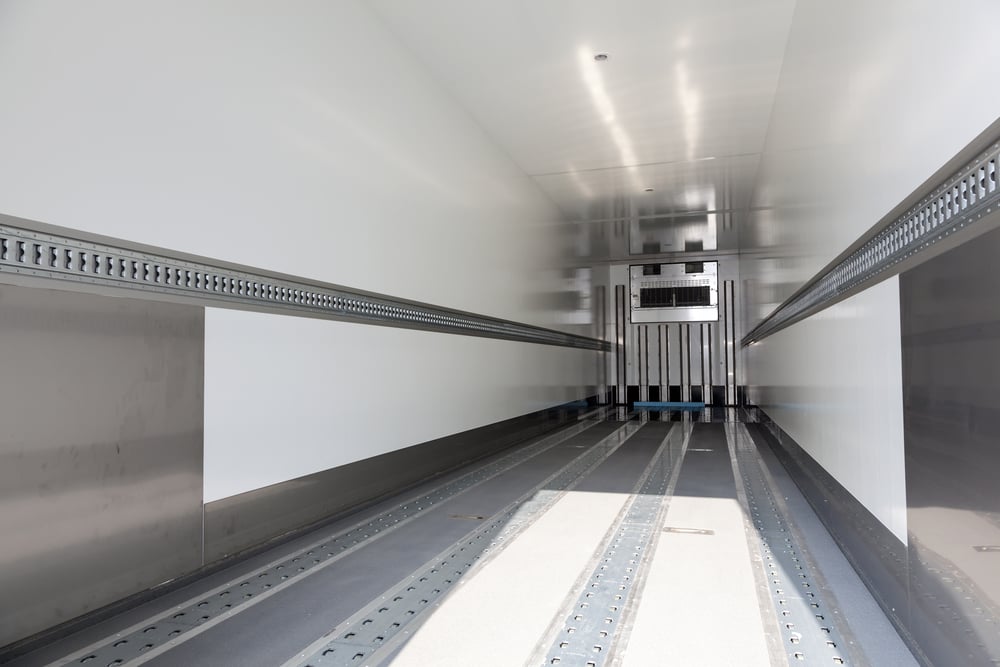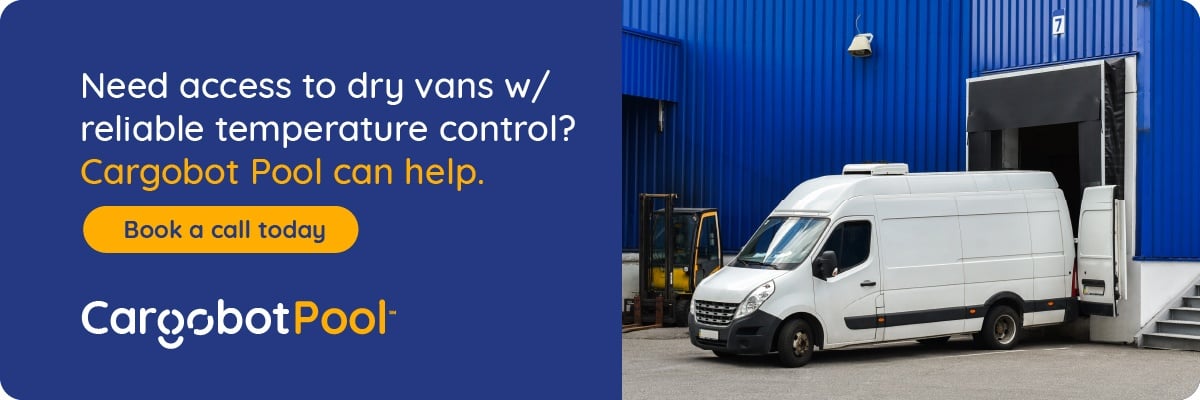Faster Partial Truckload Shipping: Expert Tips for Stronger Operations
Looking at ways to optimize your logistics operations is more critical than ever. One area that can significantly impact efficiency and customer satisfaction is partial truckload shipping. This mode of transportation offers a cost-effective solution for transporting smaller loads without needing a full truckload.
Following a few best practices for partial truckload shipments can boost the efficiency of your supply chain and create a much smoother experience. These tips can easily streamline your partial truckload shipping processes while delivering goods to your customers much faster.
What is Partial Truckload Shipping?
Partial truckload shipping, often referred to as "PTL," is a mode of freight transportation that falls between a less-than-truckload (LTL) shipment and full truckload (FTL) shipping.
A partial shipment is an ideal solution for freight that is too large for shipping LTL but not big enough to fill an entire truck. This type of shipping offers several benefits, including reducing costs, improving efficiency, and potentially faster transit times than using freight LTL shipments.
There are usually fewer stops and handling points than LTL shipping, making PTL shipping an excellent option for many shippers. Partial truckload shipments are well-suited for loads over 5,000 pounds or more than 12 linear feet of trailer space. A partial shipment provides a cost-effective transport method without needing a full truckload.
Advantages of Partial Truckload Shipping

Partial truckload shipments offer several advantages for businesses. For example, it saves costs by allowing shippers to share truck space, eliminating the need to pay for full truckload shipping when transporting smaller shipments.
Partial truckload freight shipping even reduces the risk of damage to goods, as fewer transfers and handling points are involved compared to less-than-truckload shipping.
A partial shipment also provides greater flexibility in scheduling, as businesses can consolidate their shipments with others. Using this method allows for more efficient routes and faster deliveries.
These benefits make partial truckload shipping attractive for businesses seeking an efficient and cost-effective transportation solution.
Partial Truckload Shipping: The Perfect Solution for Refrigerated and Frozen Freight
Partial truckload shipping is an excellent option for businesses transporting refrigerated and frozen freight efficiently. When shipping these types of goods, it's crucial to maintain temperature control throughout the entire transportation process to ensure their quality and safety.
Partial truckload shipping offers several advantages for refrigerated and frozen freight. By sharing truck space with other shippers, businesses can reduce transportation costs without compromising the quality of their goods. Moreover, PTL shipments typically involve fewer handling points and transfers than LTL shipments, which reduces the risk of damage to temperature-sensitive products.
When selecting a carrier for refrigerated and frozen freight, it's essential to choose a reputable and experienced carrier with modern, well-maintained equipment capable of maintaining the required temperature throughout the entire journey.
By selecting the right carrier and following best practices for partial truckload shipping, businesses can transport their refrigerated and frozen freight quickly, efficiently, and cost-effectively.
Factors to Consider for Optimizing Your Partial Truckload Freight Shipping

Is your current method for finding experienced freight carriers just not cutting it? Optimizing your partial truckload freight shipping requires careful consideration of several factors.
Carrier experience and reputation are crucial, as an established carrier is likelier to have a proven track record of success and reliability. You can also research online reviews and seek recommendations from industry peers to identify trustworthy carriers.
It's also essential to evaluate the carrier's equipment to ensure they possess modern and well-maintained trucks capable of handling your specific shipment needs.
Consider pricing and negotiate for the best possible rates while balancing cost and quality. Conducting thorough due diligence by verifying carriers' licenses, insurance coverage, and safety records can help you choose a reliable and trustworthy partial truckload carrier for your shipments.
1) Efficient Loading and Unloading Practices for Partial Truckload Shipping
Do you need your freight broker to help anticipate supply chain issues? Following best practices for efficient loading and unloading practices is key for optimizing partial truckload shipping operations.
For example, coordinating with carriers for synchronized loading and unloading schedules for PTL shipping can minimize wait times for all parties involved.
Different equipment, such as forklifts and pallet jacks, can significantly expedite the process, allowing for quicker and more accurate handling of goods.
Additionally, proper packaging, labeling, and securing of cargo is vital to prevent damage during loading and unloading. Implementing these tips can lead to a more efficient supply chain, reduce transportation costs, and increase customer satisfaction.
2) Route Optimization Strategies for Partial Truckload Shipping
Optimizing routes is crucial for maximizing efficiency in partial truckload shipments. Implementing data analytics and real-time tracking allows businesses to identify the most efficient routes, factoring in variables such as traffic, distance, and delivery windows. Collaborating closely with carriers enables shippers to optimize delivery schedules.
Coordination also helps to reduce empty backhauls and decreases the number of trips required. Balancing these cost savings with timely delivery is essential, as businesses should weigh the trade-offs between faster delivery times and potential cost reductions.
Following these strategies can help businesses enhance their partial truckload shipping operations.
3) Communication and Collaboration with Carriers for Partial Truckload Shipping
Communicating with carriers is a key element for successful partial truckload shipping. Establishing clear lines of communication ensures that both parties understand each other's expectations and can promptly address any issues that may arise.
Providing carriers with accurate and up-to-date information about your shipments enables them to optimize their resources, reduce delays, and minimize costs.
Building solid relationships with carriers is also vital for smoother operations, as it fosters trust and mutual understanding. By working closely with carriers, shippers can achieve better service quality, faster response times, and improved overall satisfaction.
Fostering open communication and collaboration with carriers is essential to maximizing the benefits of partial truckload shipments for all parties involved.
4) Leveraging Technology for Partial Truckload Shipping Optimization
Are you embarrassed you lost money from overbooking trucks to move PTL freight? The rise of technology has brought numerous opportunities to optimize partial truckload shipping operations.
Advanced tracking and analytics software allows companies to monitor shipment performance in real-time, enabling them to make better decisions to improve efficiency. Digital platforms create seamless connections with carriers, streamlining communication and reducing transit times.
Additionally, automation tools are revolutionizing the industry by reducing manual labor and enhancing overall productivity. By embracing these technological advancements, businesses can significantly optimize their partial truckload shipping processes.
Leveraging technology can result in big cost savings, increased customer satisfaction, and a competitive edge in the ever-evolving logistics landscape.
5) Effective Inventory Management for Partial Truckload Shipping
Inventory management is vital for partial truckload shipping to optimize transportation costs and ensure timely deliveries. Maintaining accurate inventory records is the first step to success, allowing businesses to forecast demand and plan shipments better accordingly. Companies can consolidate shipments and decrease shipping costs by optimizing inventory levels.
Establishing strong communication channels is key to coordinating with carriers. Providing them with accurate shipment information helps streamline the process to ensure the delivery of goods reaches their destination on time.
Ultimately, a well-managed inventory system can enhance efficiency, reduce transportation expenses, and improve customer satisfaction in the world of PTL shipping.
6) Managing Costs and Improving Profitability in Partial Truckload Shipping
Reducing expenses and boosting profitability in partial truckload shipping can be achieved through various strategies. First, negotiate rates with carriers to secure the most competitive pricing by leveraging your shipment volume and long-term partnerships.
You can also optimize shipment sizes and schedules by consolidating loads to maximize truck space and reduce the required trips. This leads to lower transportation costs and decreased environmental impact.
Analyzing and optimizing your freight spend often by regularly reviewing shipping data and identifying trends. Implementing cost-saving measures, such as route optimization or using a transportation management system (TMS), can also make a big difference in your bottom line.
Following these different strategies makes it easier for businesses to manage costs and increase profitability in partial truckload shipping operations.
Start Optimizing Your Partial Truckload Shipping With Cargobot Pool
![]()
Optimizing your logistics operations by implementing best practices for partial truckload shipping can significantly benefit your supply chain. Businesses can gain a competitive edge in the logistics landscape by reducing transportation costs, improving efficiency, and increasing customer satisfaction.
To maximize partial truckload shipping, businesses must carefully consider carrier selection, loading and unloading practices, route optimization, communication with carriers, leveraging technology, and effective inventory management. By implementing these strategies, businesses can optimize their operations and increase profitability.
If you want to streamline your logistics operations and save costs, consider partial truckload shipping as a transportation solution. Take the next step using digital PTL tools like Cargobot Pool to save money and improve operational efficiency.
Partnering with experienced and reputable carriers and following the best practices outlined in this article can help you unlock the benefits of PTL shipping for your business.
Get your personalized quote from Cargobot Pool today to accelerate your journey to a zero-friction shipping operation.
Read More About Shipping Your Freight More Efficiently This Year:
- How to Choose the Best PTL Transport Solutions Partner
- 5 of the Biggest Headaches Facing PTL Shipping This Year
- 5 Ways Partial Truckload Companies Can Improve Their Supply Chain
- How PTL Shipping Companies Can Keep up with the Latest Technology Demands
- 5 Ways Refrigerated Trucking Companies Can Keep Up w/ Industry Demands
- Consolidated Freight Shipping: 5 Simple Hacks for Slashing Costs


